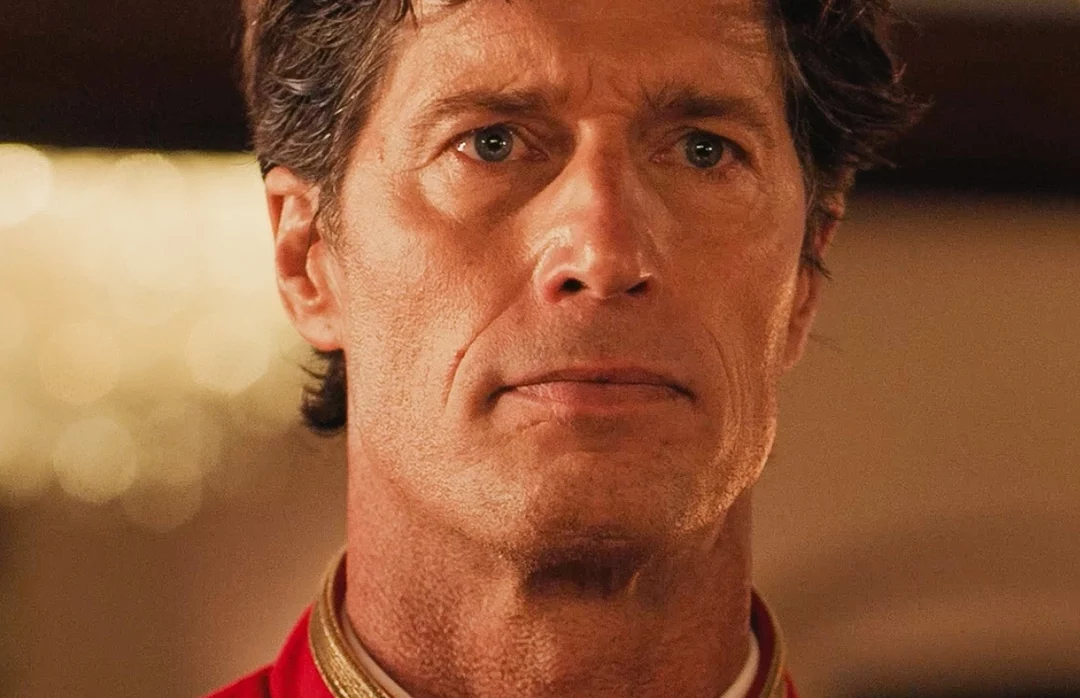Table of Contents
ToggleWhat is This “Enemies to Lovers” Trope?
Imagine this: two characters who initially dislike or even hate each other gradually develop romantic feelings and ultimately fall in love. This is called the “Enemies to Lovers” trope.
The protagonists often find themselves on opposite sides of a conflict or have a history of animosity, leading to tension, banter, and heated interactions.
As the story progresses, the characters’ animosity evolves into attraction, fueled by shared experiences, personal growth, and emotional intimacy. The transition from enemies to lovers is typically marked by moments of vulnerability, reconciliation, and mutual understanding, culminating in a passionate and deeply emotional romance.
5 Main Characteristics: Understanding “Enemies to Lovers” Trope
- Initial Antagonism
- Intense Emotional and Sexual Tension
- Forced Proximity
- Emotional Growth
- Redemption and Healing
 1. Initial Antagonism
1. Initial Antagonism
The protagonists begin the story as adversaries, often due to conflicting goals, values, or personalities. They may dislike, distrust, or even actively oppose each other, leading to tension, conflict, and heated exchanges. This initial antagonism sets the stage for the transformation of their relationship over the course of the story. Galatea example
2. Intense Emotional and Sexual Tension
Despite their animosity towards each other, the protagonists experience an undeniable attraction and chemistry that complicates their interactions. This tension manifests in heated arguments, charged encounters, and lingering glances that hint at deeper feelings simmering beneath the surface. The juxtaposition of their animosity and attraction creates a compelling dynamic that drives the narrative forward. Galatea examples
3. Forced Proximity or Circumstances
The protagonists are often thrown together by circumstances beyond their control, such as being forced to work together, sharing a living space, or finding themselves in close quarters due to external factors. This forced proximity forces them to confront their feelings for each other and gradually break down the barriers between them, leading to moments of vulnerability and intimacy.
4. Emotional Growth and Development
As the protagonists spend more time together, they begin to see each other in a new light and develop a deeper understanding of each other’s perspectives, motivations, and vulnerabilities. They may uncover hidden depths, shared interests, or common goals that challenge their initial assumptions and soften their antagonism towards each other. This emotional growth and development pave the way for the gradual transformation of their relationship from enemies to allies, and eventually, lovers.
5. Redemption and Healing
Through their interactions and experiences together, the protagonists undergo a process of redemption and healing that allows them to let go of past grievances and resentments. They may confront their own flaws and insecurities, learn to forgive each other’s mistakes, and find acceptance and solace in each other’s arms. This journey towards reconciliation and emotional intimacy culminates in a powerful declaration of love and commitment, as the protagonists overcome their differences and embrace their newfound connection.
The Arrangement by S.S. Sahoo – a Surprising Enemies to Lovers Story
 A fascinating story about an arrangement between a woman in need and a billionaire follows a couple of stylistic tropes at once: 1) Billionaire Romance; 2) Alpha Male; 3) Enemies to Lovers.
A fascinating story about an arrangement between a woman in need and a billionaire follows a couple of stylistic tropes at once: 1) Billionaire Romance; 2) Alpha Male; 3) Enemies to Lovers.
But we are interested in how it explores the latter – the trope of Enemies to Lovers.
Summary
The story revolves around two characters, Angela and Xavier, who face challenging situations involving family, financial struggles, and unexpected proposals. Angela’s father’s health issues and financial difficulties lead her to consider an insane proposal from Billionaire Entrepreneur Brad Knight – marry his bad boy heartthrob son, Xavier Knight, in exchange for financial support for her father’s medical expenses.
Xavier’s true feelings to Angela, which he opens up about shortly after they meet are complete contempt and hatred.
This is How the Setting Unfolds
| Aspect | Angela | Xavier |
| Situation | Her father is in the hospital after a stroke | He is a wealthy businessman and the son of the CEO of Knight Enterprises |
| Emotions/Thoughts | Worried, desperate, helpless | Annoyed, guilty, wanting to escape New York |
| Interactions | Bumps into a handsome stranger in the park, later meets an older man on a bench | Bumps into Angela in the park, has a confrontation with his father |
| Wishes/Desires | Wants to help her father, wishes she had the money and resources of the celebrities she sees | Wants to avoid his responsibilities and his father |
Most Popular Tropes in Erotic Novels
Here are some of the most popular tropes found in erotic novels:
- Forbidden Love or Taboo Relationships
- Alpha Male
- Enemies to Lovers
- Billionaire Romance
- Friends to Lovers
- Age Gap Romance
- Second Chance Romance.
- Insta-Love or Insta-Lust
- Fated Mates or Soulmates
- Multiple Partners or Polyamory
Initial Antagonism – Explained Further
It sets the stage for the dynamic and conflict-driven relationship between the protagonists. Why is it so important?

It creates tension and conflict. Initial antagonism between the protagonists creates immediate tension and conflict, drawing readers into the story and capturing their attention. The friction between the characters fuels the narrative, providing opportunities for dramatic confrontations, heated exchanges, and emotional intensity that keep readers engaged and invested in the outcome of their relationship.
Character Development
Initial antagonism provides a fertile ground for character development, allowing the protagonists to grow and evolve over the course of the story. As they confront their differences and confrontations, they are forced to confront their own flaws, insecurities, and biases, leading to moments of self-reflection and personal growth.
This character development adds depth and complexity to the protagonists, making them more relatable and sympathetic to readers.
It also heightens emotional and sexual tension. The tension and conflict generated by initial antagonism create a rich emotional landscape that intensifies the emotional and sexual tension between the protagonists.
The push-and-pull dynamic of their relationship, characterized by moments of heated confrontation and charged attraction, heightens the emotional stakes and keeps readers on the edge of their seats, eagerly anticipating the next twist and turn in their journey towards love and intimacy.
Male VS Female Characters
| Point | Male Characters | Female Characters |
Personality Traits |
Typical male characters may exhibit traits such as assertiveness, confidence, and a strong sense of independence. They may initially come across as arrogant or aloof, masking their vulnerability with a tough exterior. | In contrast, typical female characters may display traits such as resilience, intelligence, and determination. They may be outspoken and quick-witted, unafraid to challenge their male counterpart’s beliefs and actions. |
Motivations and Goals |
Male characters may be driven by ambition, competition, or a desire for power or control. They may see the female character as a rival or obstacle to overcome, fueling their initial animosity. | Female characters may be motivated by principles, justice, or personal values. They may oppose the male character’s actions or beliefs, seeing them as unjust or morally wrong. |
Interactions and Conflict |
Initially, interactions between the male and female characters may be characterized by friction, conflict, and verbal sparring. They may clash over differences in opinion, goals, or methods. | As the story progresses, their interactions may become more charged with sexual tension, as they begin to recognize and grudgingly admire each other’s strengths and qualities. |
Emotional Journey |
Both characters undergo a transformative emotional journey as they move from enemies to lovers. Male characters may experience a shift in perspective, realizing their preconceived notions about the female character were misguided. | Female characters may also undergo personal growth, learning to trust and open up to the male character despite their initial animosity. |
Romantic Development |
The transition from enemies to lovers is marked by moments of vulnerability, intimacy, and emotional connection. As they confront their feelings for each other, barriers break down, leading to passionate and deeply emotional romantic scenes. | |




